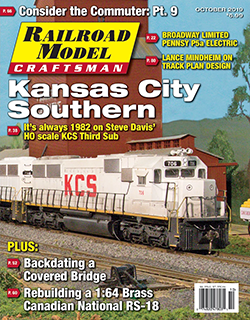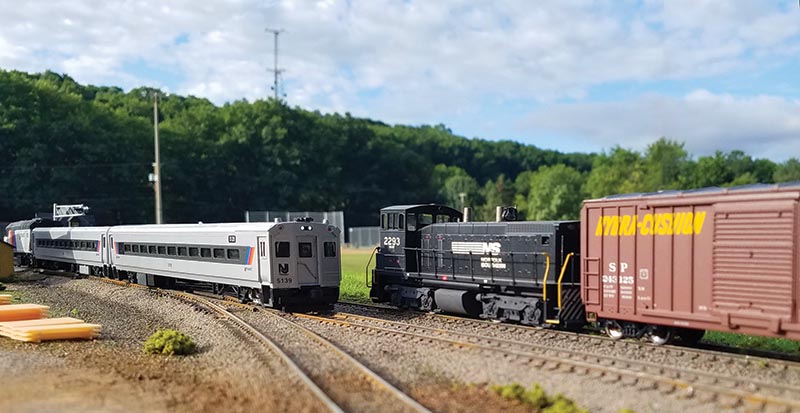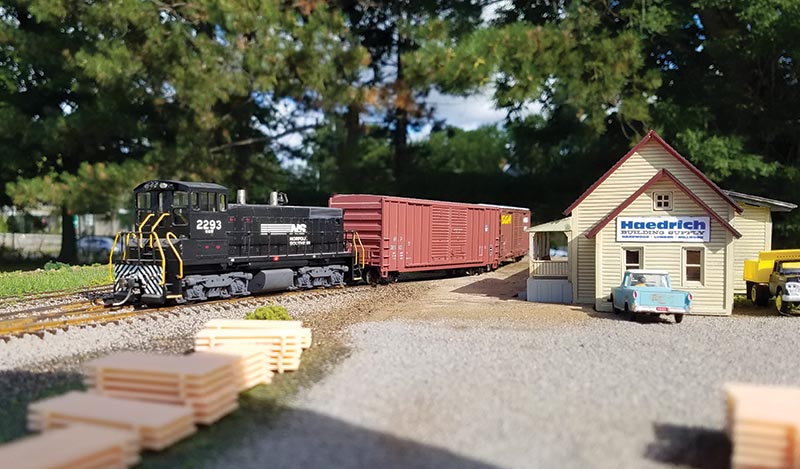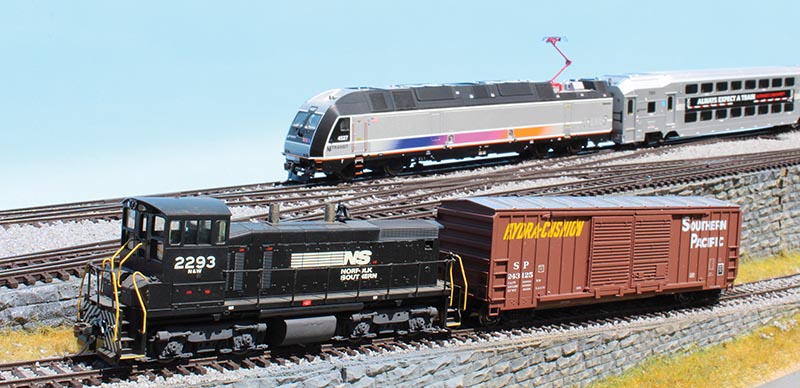 By Otto M. Vondrak/photos as noted
By Otto M. Vondrak/photos as noted
LAST STOP! It’s hard to believe we have reached the end of the line. Last month, we discussed different types of commuter trains and how to model them. In this installment, we discuss operations on our fictional NJ Transit Flagstone Branch. While our project railroad is compact, there’s plenty of action to keep two to three operators busy for hours, including freight operations. Wait, did you say freight? I thought this was a commuter railroad! Take a track out of service for maintenance, add in some work extras, and you’ll quickly find our deceptively simple railroad can become quite busy.
The Flagstone Branch
Our fictional Flagstone Branch starts at White River Terminal, which is probably somewhere near Newark, N.J. The electrified zone ends at Bucklin Junction, and this is also where the main line is reduced from two tracks to one. We can assume there are several unmodeled towns between these two points served with frequent trains, most likely every half-hour. The line beyond Bucklin Junction to Flagstone serves smaller suburbs on a single-track route, with far less frequency, perhaps once an hour or every two hours.
Just thirty years ago, a single Budd RDC shuttle running a few times a day from Flagstone to Bucklin Junction was adequate to provide connections. As the suburbs grew, so did the frequency and the equipment. By the 1980s, an EMD F40PH and coaches were the norm. Because diesels do not accelerate as quickly as electrics, the diesel trains generally did not travel beyond Bucklin Junction, requiring passengers traveling to White River Terminal to change trains to complete their journey.

NJ Transit Train 508 passes Norfolk Southern local freight H-66 at Flagstone. Once the train is clear, the freight crew will radio the dispatcher for permission to occupy the main while they switch out Haedrich Lumber. Even on a small layout, coordinating movements like these add operational interest. Otto M. Vondrak photo
As the outer suburbs continued to grow, so did the demand for a one-seat ride. By 2011, NJT had procured Bombardier ALP-45DP locomotives that could operate off high-voltage catenary or off its own diesel. With the arrival of these new units, it was possible to offer “through” service all the way to Flagstone without changing trains. These direct trains only operate during rush hour, with midday service provided by conventional diesel trains. We didn’t model this aspect, but you can imagine there are electric trains that provide frequent service between White River Terminal and Bucklin Junction.
While there’s not as much freight traffic as there used to be, there’s enough to keep a local crew busy. Starting at White River Terminal, we have an interchange track just west of the station where blocks of cars are dropped off for delivery by Norfolk Southern from Oak Island Yard. A switcher is assigned to this district, stored in the pocket track that comes off the interchange. The old Express Terminal in the lower level of the station is used by a warehousing agent that receives boxcars and occasional refrigerated shipments. East of the station, there’s a siding for Danny Birnbaum Fine Furniture. They receive inbound boxcars of lumber, and occasionally ship outbound loads.

The local crew spots the loaded Southern Pacific boxcar at Haedrich Lumber, while the empty Western Pacific boxcar will return for interchange at White River Terminal. Otto M. Vondrak photo
Moving through Bucklin Junction, there are no regular freight customers, but occasionally NJT commuter equipment is shipped out to another shop for heavy repairs. This means that sometimes a passenger car or locomotive is added to the freight consist for delivery to the interchange at White River Terminal.
Haedrich Lumber in Flagstone is a steady customer, receiving about one boxcar of lumber every two weeks. The runaround track helps facilitate movements here, and also gives a place for the local freight to duck into so as to avoid conflicting with the scheduled commuter runs…



